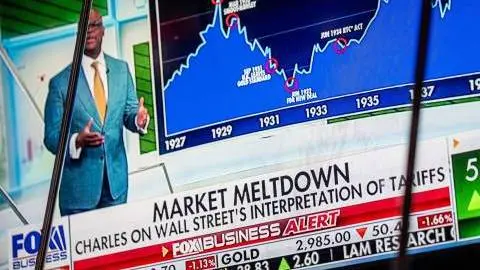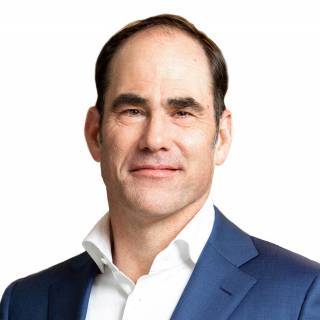The renewed pressure on global central banks
Both the US Fed and the European Central Bank are set to do more rather than less over the coming months, given the financial and economic turmoil around the globe
Federal Reserve
President Trump’s tariffs will undoubtedly put up prices of imported goods, and there will be higher service prices too, such as repair and insurance of those goods. However, the hit to growth from tariffs via business uncertainty and the squeeze on consumer spending power, at a time when the government is implementing sweeping spending cuts, means that unemployment is likely to rise by more than the Fed had previously expected. Chair Jerome Powell’s recent speech acknowledged these risks but suggested policymakers will “wait and see” the effects of tariffs before adjusting policy. Remember, too, that the Fed has already delivered 100bp of cuts since September.
This leads us to conclude that although asset prices are falling, in the absence of financial system stress there is little inclination for a knee-jerk reaction from the Fed despite pressure from the president to cut rates. We expect it to acquiesce in the second half of the year as economic weakness and lower shelter costs, which make up 40% of the CPI by weight, become apparent. We look for 125bp of cuts from the third quarter onward, either starting with 25bp at the July FOMC or, perhaps more likely, a 50bp move in September, similar to the central bank's action in 2024. We believe the risks are currently skewed towards the bank implementing more cuts over time rather than fewer.
European Central Bank
The euphoria after the German fiscal U-turn and strong European intentions to spend more on security and defence has disappeared for now. Instead, US tariffs on the EU and many other countries have brought back growth concerns for the eurozone, at least in the nearer term. The strengthening of the euro as well as the drop in energy prices has added to the disinflationary forces the current trade tensions will have for the eurozone. As a result, the ECB, which looked hesitant to decide between a pause and a next rate cut only a few weeks ago, will have to continue its current easing cycle at its April meeting.
The 90-day pause in the ongoing trade saga will do little to change the need for an April rate cut. Unless trade tensions are reversed or European governments decide on mitigating measures for the eurozone economy, we expect the ECB to continue cutting rates to the lower bound of neutral rate estimates. With another rate cut at the June and September meetings, the deposit rate should end the year at 1.75%.
Bank of England
Since the tariff announcement, an extra rate cut has been priced into the Bank of England curve over the next couple of years. Though the UK is less directly impacted by Trump’s tariffs, the threat of a US downturn has acted as a leveller for the likes of the UK. Until recently, investors in the UK had been anticipating a less aggressive easing approach.
For now, though, the Bank is treading cautiously. Headline inflation is set to approach 4% later this year and policymakers are visibly concerned about this translating into even stickier services inflation, which is stuck around 5%. Our view is that this should be closer to 4% by the summer, on account of less aggressive annual price hikes in April. We're sticking to our view that the Bank will cut rates every quarter until Bank Rate hits 3.25% in 2026.
Bank of Japan
We have dropped our call for a Bank of Japan hike in May amid tariff concerns and growth slowdown in the current quarter. We believe that the frontloading of Japanese vehicles and machinery should help boost GDP in the first quarter, followed by weaker growth in the second quarter. Safe-haven seeking has pushed the USD/JPY below the 145 level, which may ease some of the inflationary pressures.
Governor Kazuo Ueda recently highlighted the downside risks of growth rather than inflation concerns. However, inflation is expected to remain above 3% for a while on the back of solid wage growth. Furthermore, a dovish signal on monetary policy could lead to a weakening of the JPY, which should be heavily criticised by Trump. As a result, the BoJ is likely to stick to its path of policy normalisation in guidance. We expect a hike in July if Japan and the US reach an agreement on trade during the 90-day negotiation period.
This publication has been prepared by ING solely for information purposes irrespective of a particular user's means, financial situation or investment objectives. The information does not constitute investment recommendation, and nor is it investment, legal or tax advice or an offer or solicitation to purchase or sell any financial instrument. Read more
Download
Download article
15 April 2025
ING Monthly: The tariff sledgehammer smashing the global world order This bundle contains 15 Articles


